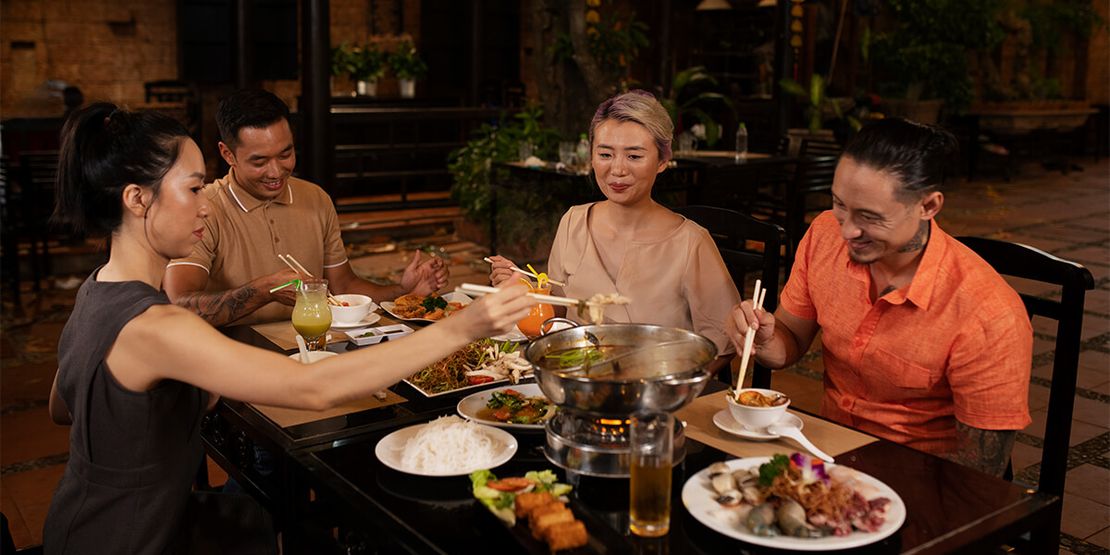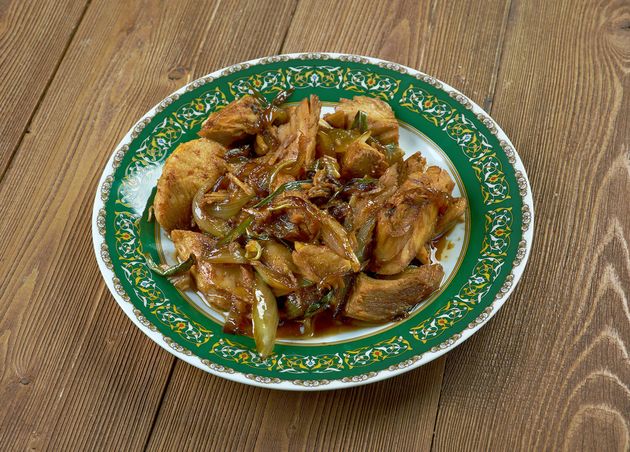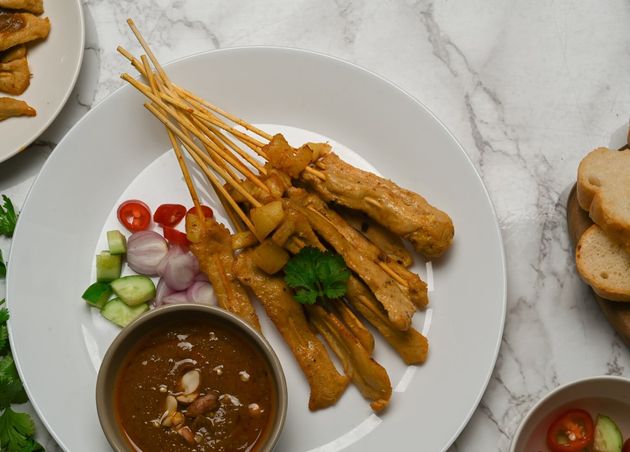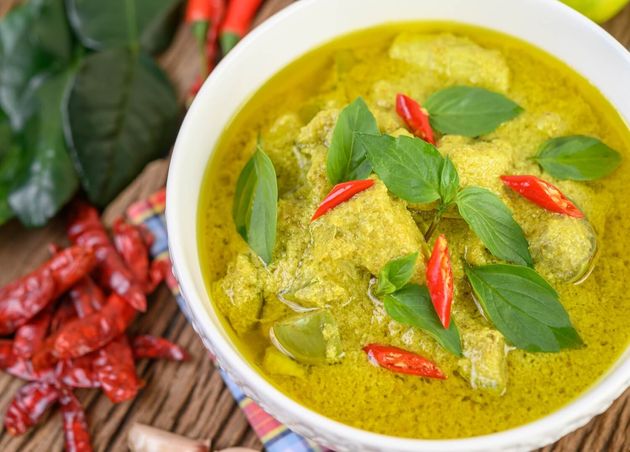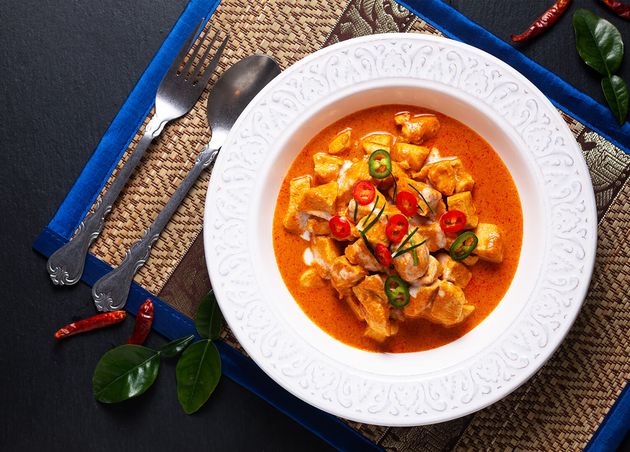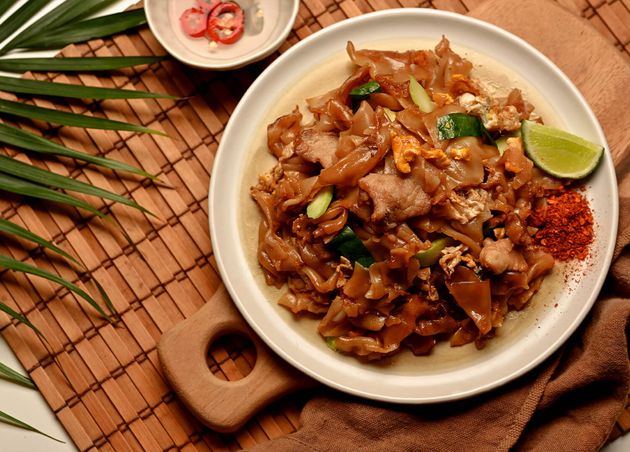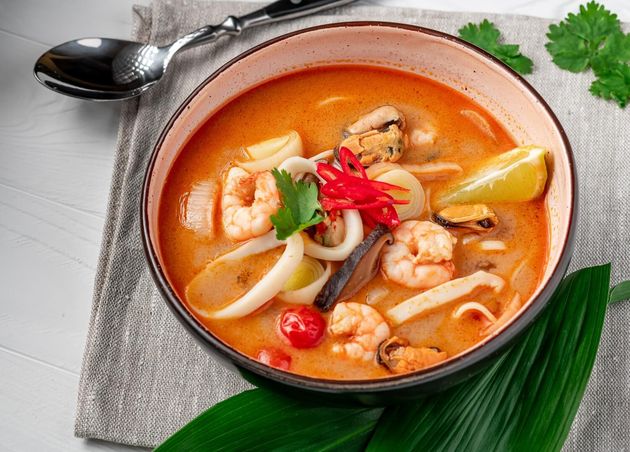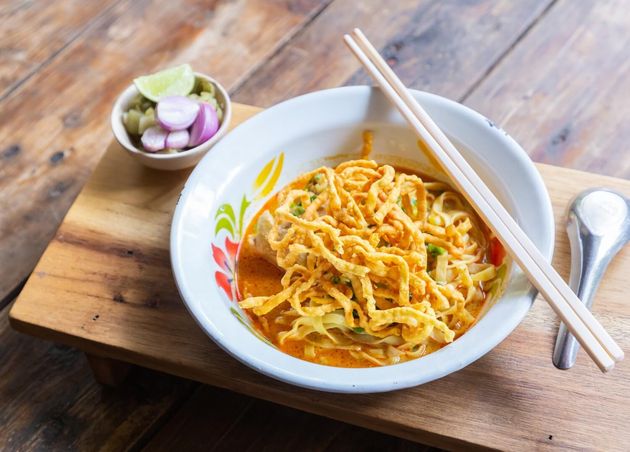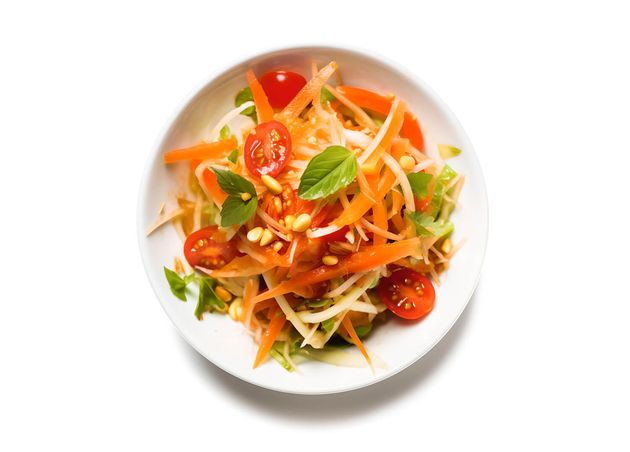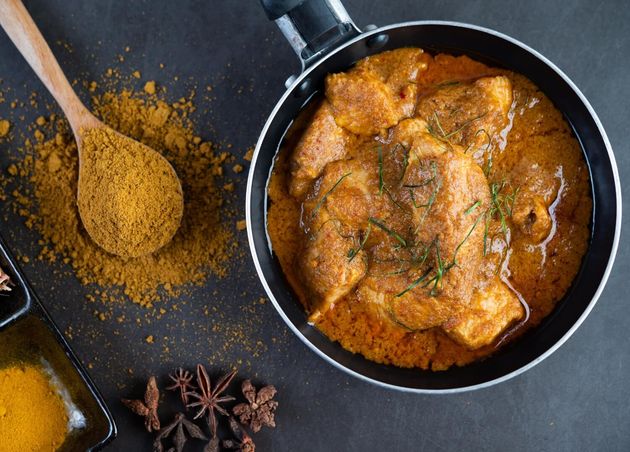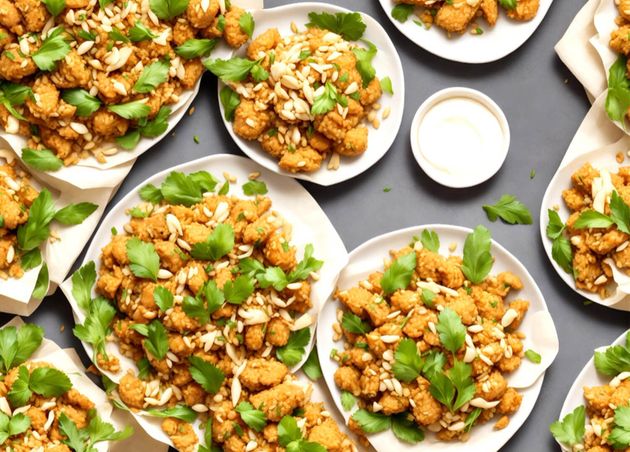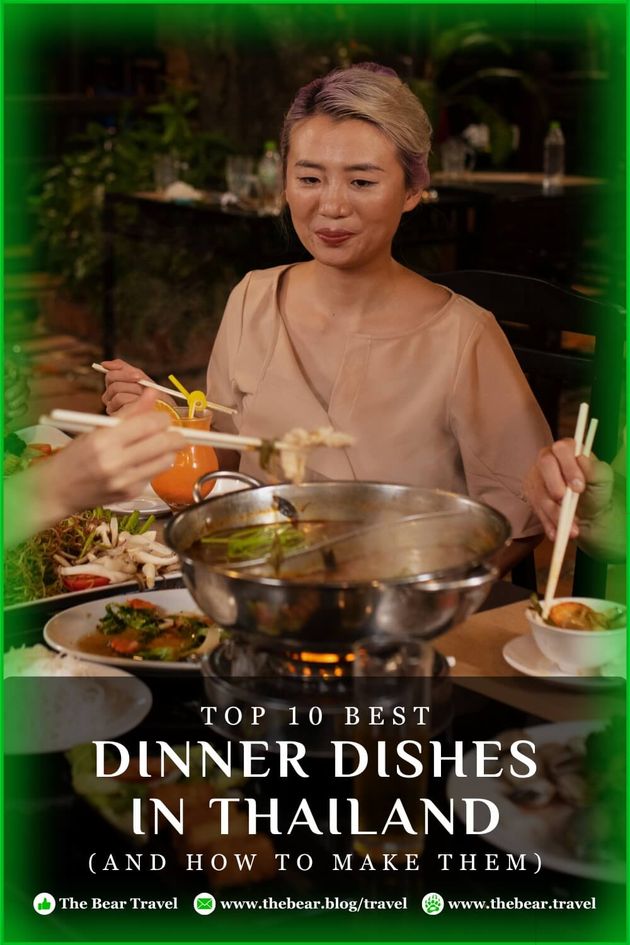Top 10 Best Dinner Dishes in Thailand (And How to Make Them)
When it comes to dinner, choosing the right dishes can make all the difference. From comforting classics to innovative creations, there are countless options that are perfect for a satisfying dinner.
In this article, we will explore only the top 10 best dinner dishes to please your palate. Even if you're a fan of Thai cuisine or international dishes or crave hearty comfort foods, we definitely have a variety of recipes that will inspire you to create memorable dinners at home. So, discover our list of the ultimate dinner dishes that will elevate your dining experience.
What are the Best Dinner Dishes in Thailand?
Mealtimes are opportunities to indulge in delicious flavors, and whether it's breakfast, lunch, or dinner, choosing the right dishes is essential. In addition to our curated list of mouthwatering breakfast and lunch options, we present below the top 10 best dinner dishes in Thailand and how to make them.
#10 Gai Pad Med Ma Muang (Thai Cashew Chicken)
Gai Pad Med Ma Muang, also known as Thai Cashew Chicken, is a delectable dish featuring deep-fried chicken and cashew nuts combined with a blend of soy, oyster, and fish sauce, along with onions, garlic, shallots, chilies, and colorful bell peppers. This tasty dish is a delightful addition to any Thai cuisine experience. To make Gai Pad Med Ma Muang, follow these steps:
- Prepare the Chicken and Cashew Nuts:
- Remove the chicken from the marinade and set it aside.
- In a pan over medium heat, warm half a cup of oil.
- Fry the dried chilies for one minute, then drain them on a paper towel.
- Repeat the process with the cashew nuts.
- Stir-Fry the Ingredients:
- Heat a pan with one tablespoon of oil and add the onions.
- Make sure you fry it until the onions turn translucent.
- Then, add the cabbage and garlic.
- Add the chicken and mix well.
- Cut the dried chilies into 1-centimeter pieces and add them to the pan.
- Add Sauces and Finish:
- Toss in the oyster, soy, and black soy sauces and stir until the chicken is cooked.
- Finally, add green onions and cashews and stir for another minute.
- Serve the meal hot over rice after taking it off the stove.
Enjoy the exciting combination of flavors and textures in Gai Pad Med Ma Muang, and savor this classic Thai dish's rich and satisfying taste.
#9 Moo Satay (Thai Pork Satay หมูสะเต๊ะ)
Moo Satay is a beloved Thai dish often enjoyed as a snack or light meal. It features grilled pork marinated in a flavorful coconut milk and turmeric blend, served with a rich peanut sauce. While pork is commonly used, other meats like chicken can also be used. The combination of tender meat and fragrant peanut sauce makes it a delightful treat.
- To make Thai Moo Satay at home, follow these steps:
- Toast coriander seeds and crushed cumin in a separate pan until golden.
- Finely chop the toasted seeds using a coffee grinder or mortar and pestle.
- Grind galangal and lemongrass using a mortar and pestle.
- In a bowl, proceed to mix the meat with the marinade, massaging it for optimal flavor.
- Refrigerate the marinated meat (leave at least 4 hours or overnight).
- Skewer the meat and grill over medium heat, brushing with coconut milk.
- Cook until the skewers are thoroughly cooked and golden brown.
Serve the Moo Satay with the remaining marinade as a dipping sauce, and enjoy the succulent flavors of this classic Thai dish.
#8 Gaeng Keow Wan (Green Curry แกงเขียวหวาน)
Gaeng Keow Wan, commonly known as Green Curry, is a vibrant Thai dish celebrated for its rich and savory taste. This curry is distinguished by its striking green color, which comes from fresh green chilies and herbs blended into the curry paste. Gaeng Keow Wan is a versatile dish that can be made with various proteins, including chicken, beef, or tofu, and is typically served with steamed rice.
The preparation steps are:
- Prepare the Curry Base:
- In a pot, heat a tablespoon of vegetable oil over a normal flame. Add the green curry paste and sauté for about 2 minutes until fragrant. This step enhances the flavors of the curry.
- In a pot, heat a tablespoon of vegetable oil over a normal flame. Add the green curry paste and sauté for about 2 minutes until fragrant. This step enhances the flavors of the curry.
- Add Coconut Milk and Protein:
- Pour in the coconut milk and stir well to combine with the curry paste. Bring it to a gentle simmer before adding the chicken or beef pieces. Cook for about 5-7 minutes until the meat is cooked through.
- Pour in the coconut milk and stir well to combine with the curry paste. Bring it to a gentle simmer before adding the chicken or beef pieces. Cook for about 5-7 minutes until the meat is cooked through.
- Incorporate Vegetables:
- Add the quartered eggplant and bamboo shoots to the pot. Let it simmer for another 5 minutes until the vegetables are tender.
- Add the quartered eggplant and bamboo shoots to the pot. Let it simmer for another 5 minutes until the vegetables are tender.
- Season and Garnish:
- Stir in fish sauce and sugar to balance the flavors. Add torn kaffir lime leaves and Thai basil leaves to the curry just before serving to infuse their aromatic qualities.
- Stir in fish sauce and sugar to balance the flavors. Add torn kaffir lime leaves and Thai basil leaves to the curry just before serving to infuse their aromatic qualities.
- Serve:
- Ladle the Gaeng Keow Wan into bowls and serve it hot with steamed jasmine rice. The combination of creamy coconut milk, spicy green curry, and fresh herbs creates a delightful experience for your taste buds.
Savor the exquisite flavors of Gaeng Keow Wan as you enjoy its creamy texture and savory profile. This dish exemplifies the essence of Thai cuisine with its balance of heat, sweetness, and freshness.
#7 Gaeng Panang Gai (Chicken Panang Curry พะแนงไก่)
Gaeng Panang Gai is a Thai curry dish that features a rich and velvety sauce made with peanuts, red curry paste, cilantro, cumin, and prawn sauce, all simmered in coconut milk. The slow simmering of onion, potato, and meat in the sauce gives it a refreshing taste, and it is traditionally served over rice for a satisfying meal. Here's a simple recipe to make Gaeng Panang Gai:
- Boil the Curry Paste and Coconut Milk:
- In a 4-quart pot, for approximately 12 minutes, or until the oil separates, boil the curry paste and coconut milk over medium-high heat.
- After 5 minutes of stirring, add the chicken and cook thoroughly.
- Add Seasonings:
- Flush with boiling stock, sugar, and fish sauce.
- Once the chicken is already cooked, season it with salt and pepper.
- Proceed to serve the chicken with the sauce over rice.
- Garnish and Serve:
- Garnish with basil and lime leaves before serving.
Enjoy the delightful flavors of Gaeng Panang Gai and savor the creamy and aromatic experience of this traditional Thai curry.
#6 Pad See Ew (Thai Stir Fried Noodles)
Pad See Ew is another popular Thai noodle dish featuring wide rice noodles stir-fried with garlic, onion, egg, cabbage, and a protein of choice. Soy sauce usually gives the dish its dark color, adding a savory element to the flavors.
- To make Pad See Ew, follow these steps:
- Proceed to heat a wok or a large pan over high heat and lightly brown garlic.
- Add your own choice of protein (such as chicken) and cook until it turns pink to white.
- Stir in Chinese broccoli stems, as they take longer to cook than the leafy part. Cook for 2-3 minutes.
- Add Chinese broccoli leaves and cook for another 30 seconds until wilted.
- Push everything to one side of the pan to make room for scrambled eggs. Scramble the eggs in the pan.
- Mix the scrambled eggs with the other ingredients in the pan.
- In a separate pan, heat oil and swirl a portion of the egg mixture to lightly coat the bottom. Cook until the bottom is browned and the top is slightly moistened.
- Flip the omelet and continue frying until golden. Transfer to a flat surface.
- Spoon a portion of the pork mixture onto the center of the omelet. Fold two opposite ends over the filling, then fold the other two edges in the opposite direction to create a square with the filling inside.
- Repeat the process to make three more omelets using the remaining egg mixture and filling, greasing the pan with oil before each addition.
- Make an X at the top of each omelet to access the filling.
- Serve the Pad See Ew with rice tossed with cilantro and green onions.
Enjoy the delicious flavors of Pad See Ew, and savor the unique taste of this classic Thai noodle dish.
#5 Tom Yum Goong (Tom Yum Soup ต้มยำกุ้ง)
Tom Yum Goong is a quintessential Thai soup renowned for its bold flavors and aromatic ingredients. This hot and sour soup features fresh shrimp (goong), fragrant herbs, and a delightful balance of spicy, sour, and savory notes. It is not only a staple in Thai cuisine but also a favorite among food lovers worldwide.
Here's a simple recipe to make Tom Yum Goong:
- Prepare the Broth:
- In a pot, bring the water or chicken stock to a boil. Add the lemongrass, kaffir lime leaves, galangal, and chilies. Let it simmer for about 5 minutes to infuse the flavors.
- In a pot, bring the water or chicken stock to a boil. Add the lemongrass, kaffir lime leaves, galangal, and chilies. Let it simmer for about 5 minutes to infuse the flavors.
- Add Shrimp and Mushrooms:
- Introduce the shrimp and mushrooms to the pot. Cook about 2-3 minutes until the shrimp turns pink and opaque.
- Introduce the shrimp and mushrooms to the pot. Cook about 2-3 minutes until the shrimp turns pink and opaque.
- Season the Soup:
- Stir in the fish sauce and lime juice. Adjust seasoning according to your taste preference; you may want to add more fish sauce for saltiness or more lime juice for acidity.
- Stir in the fish sauce and lime juice. Adjust seasoning according to your taste preference; you may want to add more fish sauce for saltiness or more lime juice for acidity.
- Garnish and Serve:
- Remove from heat and garnish with fresh cilantro before serving. Serve hot with steamed rice, or enjoy it as a standalone dish.
Savor the delightful combination of spicy, sour, and savory flavors in Tom Yum Goong. This dish exemplifies the essence of Thai cuisine with its fresh ingredients and aromatic profile. Whether enjoyed at a local restaurant or made at home, Tom Yum Goong is sure to impress with its vibrant taste and fragrant aroma.
#4 Khao Soi (Thai Coconut Noodle Soup)
Khao Soi is a traditional Northern Thai dish that showcases a delightful combination of flavors and textures. This rich and creamy coconut curry noodle soup features egg noodles and is typically topped with crispy fried noodles, making it a unique culinary experience. Its origins are influenced by Burmese cuisine and reflect the diverse culture of Northern Thailand. Here's a simple recipe to make Khao Soi:
- Cook the Noodles:
- In a large pot of boiling water, cook the egg noodles according to package instructions until al dente. Drain and set aside.
- In a large pot of boiling water, cook the egg noodles according to package instructions until al dente. Drain and set aside.
- Prepare the Curry Base:
- In a separate pot, heat vegetable oil over medium heat. Add the Khao Soi curry paste and fry for a few minutes until fragrant. Then add the chicken or beef pieces and stir until they are browned.
- In a separate pot, heat vegetable oil over medium heat. Add the Khao Soi curry paste and fry for a few minutes until fragrant. Then add the chicken or beef pieces and stir until they are browned.
- Add Coconut Milk and Stock:
- Pour in the coconut milk and chicken or beef stock. Bring to a gentle simmer and let it cook for about 15-20 minutes until the meat is tender.
- Pour in the coconut milk and chicken or beef stock. Bring to a gentle simmer and let it cook for about 15-20 minutes until the meat is tender.
- Season the Soup:
- Stir in soy sauce, fish sauce, and lime juice. Adjust seasoning to your taste, adding more fish sauce or lime juice as needed.
- Stir in soy sauce, fish sauce, and lime juice. Adjust seasoning to your taste, adding more fish sauce or lime juice as needed.
- Serve:
- In bowls, place a portion of cooked noodles, ladle the hot curry soup over them, and top with crispy fried noodles. Garnish with sliced shallots, fresh cilantro, and drizzle with chili oil or powder if desired.
Savor the comforting and aromatic flavors of Khao Soi as you enjoy its creamy texture combined with the crunch of fried noodles. This dish beautifully represents Northern Thai cuisine and is perfect for anyone looking to experience authentic Thai flavors in a warm and satisfying bowl. Whether enjoyed at a local restaurant or prepared at home, Khao Soi is sure to delight your taste buds with its rich heritage and delicious ingredients.
#3 Som Tam (Thai Green Papaya Salad ส้มตำไทย)
Som Tam, while is also popularly known as Green Papaya Salad, is a unique and flavorful Thai dish that is a delightful combination of peanuts, dried shrimp, fresh green beans, fish sauce, chilies, tomatoes, sugar, lime juice, and shredded sour green papaya. This dish is made using a pestle and mortar, and it offers a burst of flavors and textures that are both refreshing and satisfying.
Here's a step-by-step guide on how to make Som Tam:
- Pound the Ingredients:
- In a clay or wooden mortar, pound the garlic and chilies with a wooden pestle for 30 seconds until mostly broken down to prevent splattering fluids.
- Pound 1 tablespoon (15g) peanuts and one tablespoon (15g) dried shrimp for 30 seconds to crush the peanuts without making a paste.
- Dissolve palm sugar by pounding for 30 seconds, then pound the lengthy beans for a minute or two.
- Gently pound the tomatoes for 15 seconds to extract their juices.
- Mash the lime juice and fish sauce together with a pestle for fifteen seconds until the palm sugar dissolves.
- Add the shredded green papaya and continue pounding until the dressing is thoroughly blended and the green papaya has started to absorb it. Be careful not to over-pound the green papaya, as it will lose its crunchiness if pounded too much.
- Add the remaining 15 grams (about 1 tablespoon) of peanuts and crush gently until they are partially destroyed.
- Serve:
- Quickly arrange the salad on top of the sticky rice and serve it hot.
Enjoy the vibrant and refreshing flavors of Som Tam and savor the unique experience of this traditional Thai salad.
#2 Gaeng Massaman (Massaman Curry มัสมั่นไก่)
Gaeng Massaman, also known as Massaman Curry, is a unique Thai curry offering a rich, creamy, and slightly sweet flavor. It is influenced by Persian and Indian cooking. It features a blend of Middle Eastern spices, such as cardamom, cinnamon, cloves, cumin, nutmeg, mace, and chili peppers, combined with ingredients commonly used in native Thai cuisine, including lemongrass, galangal, white pepper, shrimp paste, shallots, and garlic.
The dish typically includes chicken or other meat, potatoes, onions, and peanuts and is cooked in a base of coconut milk and cream. Here's a simple recipe to make Gaeng Massaman:
- Prepare the Curry Base:
- In a large skillet or saucepan, toss the curry paste, ginger, garlic, and oil. If using coconut milk, add it after the first two minutes of mixing.
- Whisk constantly while boiling to dissolve the curry paste. Include peanuts.
- Cook the Chicken and Add the Ingredients:
- After adding the chicken and stirring once, rest it. The chicken should be white and roasted on the exterior for about five minutes.
- Combine tamarind paste and sugar, and season with salt. Add potatoes, cinnamon, bay leaves, and red onion.
- Combine well.
- Simmer and Serve:
- Simmer the potatoes for 20 minutes.
- After cooking, add pepper and salt to taste. The curry's cinnamon sticks and bay leaves are optional.
- Serve the curry hot.
Enjoy the rich and aromatic flavors of Gaeng Massaman and savor the unique blend of spices and ingredients that make this dish a true Thai culinary delight.
#1 Pad Kra Pao Moo (Holy Basil Stir Fry with Pork ผัดกะเพรา)
Pad Kra Pao Moo is a top favorite among Thai dishes, surpassing the popular Pad Thai. This delectable dish features minced pork, green beans, Thai basil, chilies, and garlic, served over rice. Loved by locals and tourists, this authentic Thai cuisine is a must-try.
- To recreate Pad Kra Pao Moo at home, follow these simple steps:
- In a bowl, mix ground pork and soy sauce until well combined.
- Rinse the basil leaves after removing them from the stalk.
- Heat a pan (large recommended) or wok over medium-high heat.
- Add oil, crushed or minced garlic, and chili peppers. Mix well.
- After a short while, stir in the ground pork and continue cooking over medium-high heat.
- When the pork is halfway cooked, add soy sauce and oyster sauce.
- Toss in the basil leaves and cook until done.
- Remove from heat and taste for seasoning adjustments.
- For a touch of sweetness, add a little sugar if desired.
Enjoy the delightful flavors of Pad Kra Pao Moo, and savor the essence of authentic Thai cuisine in every bite.
🐻 Top 10 Recap: Best Dinner Dishes in Thailand
Ready to dive into the flavors of Thailand? Here’s a quick recap of our Top 10 Best Dinner Dishes that promise to elevate your dining experience. Each dish showcases the rich culinary heritage of Thailand, making them must-tries for any food enthusiast!
|
🐻 Wrap Up Your Culinary Journey in Thailand!
Thai food is rich and worth exploring, particularly in Western establishments. Thai cuisine combined with Cambodian, Laotian, and Myanmar meals offers exciting gastronomic possibilities. Many Western restaurants fail to interpret Thai food creatively, highlighting its unique tastes and ingredients. To properly enjoy cuisine, one must go beyond what's already known to other genuine and lesser-known dishes.
Each meal combines tradition and innovation, from complex spices to rare plants. However, to taste an authentic dish, one must go beyond the conventional and embrace its complexity and variety. Locals and visitors may enjoy a delectable trip that crosses boundaries and deepens their passion for food by discovering and appreciating Thai cuisine.
📍Pin it!
Tle (Hungry Bear)
A designer and photographer by trade, Tle is obsessed with improving user experience and never accepts the status quo. She loves good food, enjoys experimenting with fusion cuisine, and can even taste the difference in fish varieties in Fish & Chips. A pro in hotels, lifestyle, holidays, and beyond, Tle loves exploring the world and is, of course, a tech enthusiast. As a UX researcher and future product developer by profession, she brings a fresh perspective to many things.
The Bear Travel | Experience like a Local
A fast-growing Thailand Travel Blog written by Expats and Thais since 2017. We will share our experiences and ideas from an insider point of view for you to create your own unique Thailand experience.
For the latest news and events about The Bear Travel, follow us on Facebook, Instagram, Twitter, Pinterest, or YouTube.
For any issues, concerns, or queries, don’t hesitate to CONTACT us.
Recommended for you
Bira Circuit: Get Your Heart Racing in Chonburi
The Bear Team
What to Wear in Thailand: Everything You Need to Know
Dr. Theodore (Professor Bear)
Terminal 21: A Shopper's Paradise in Bangkok
The Bear Team


